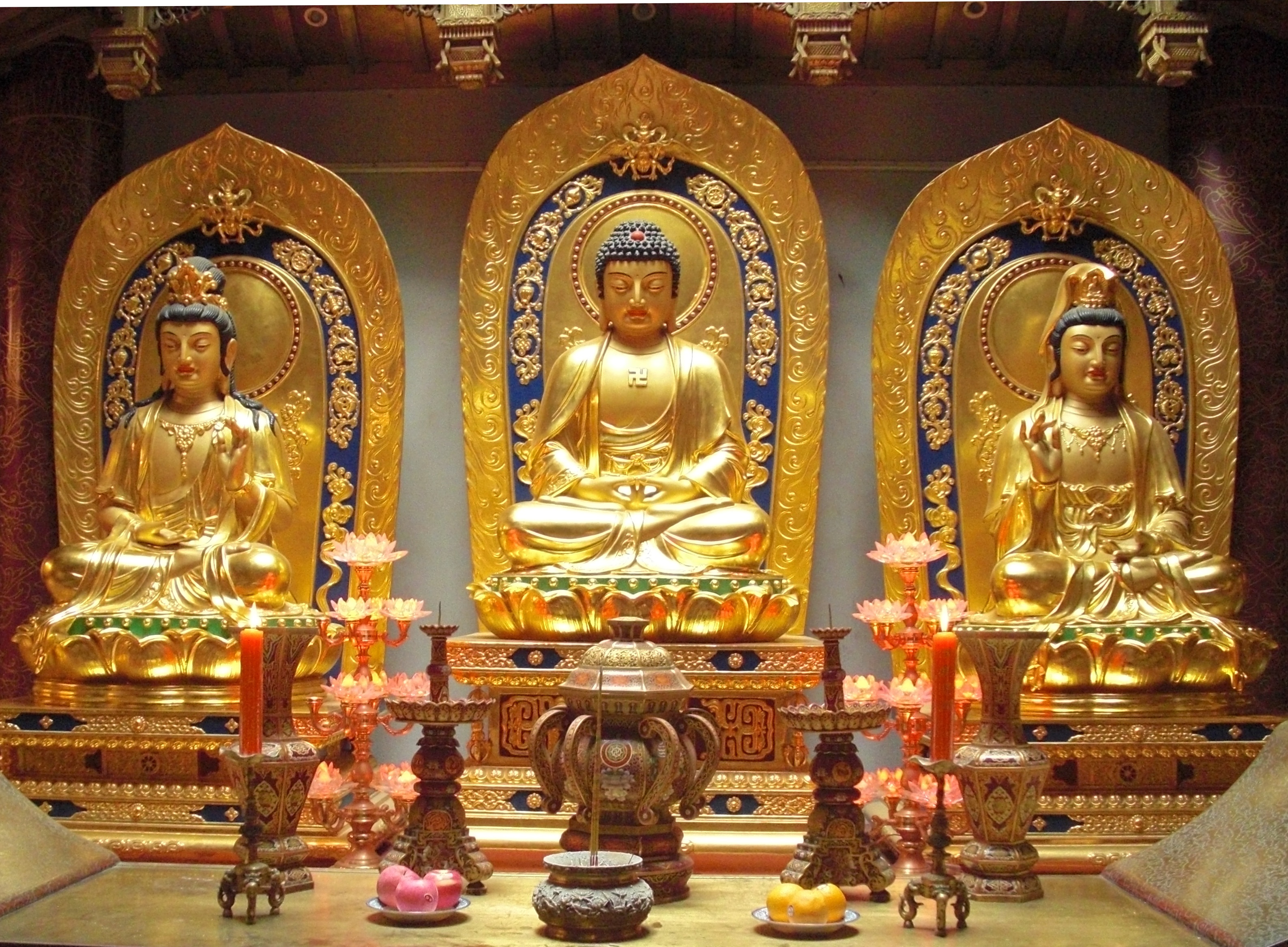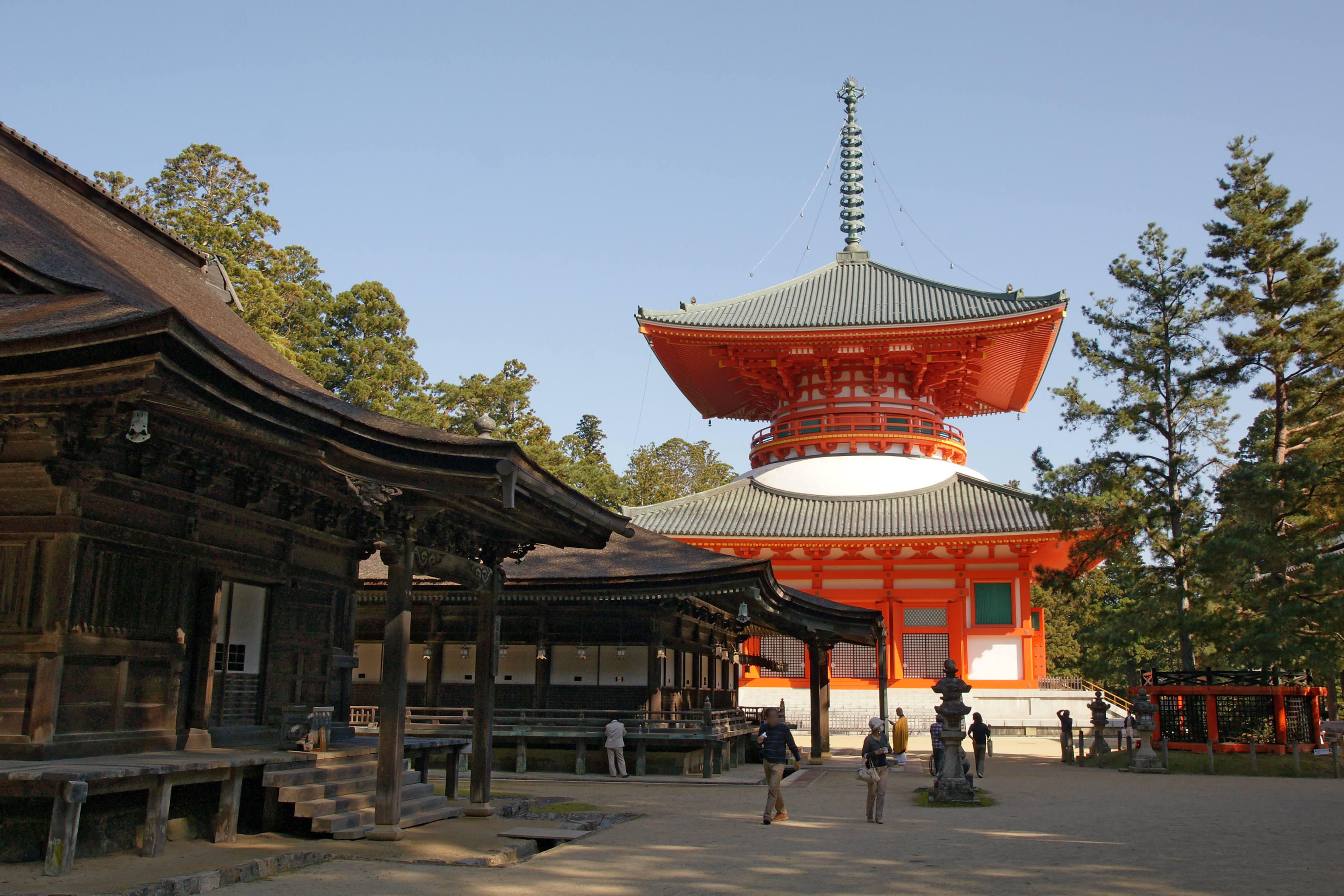|
Koun Ejō
(1198–1280) was the second Lineage (Buddhism), patriarch of the Japanese Sōtō school of Zen Buddhism who lived during the Kamakura period. He was initially a disciple of the short-lived Darumashu, Darumashū sect of Japanese Zen founded by Nonin, Nōnin, but later studied and received dharma transmission under the Sōtō schools founder Dōgen. Today Ejō is considered Dōgen's spiritual successor by all existing branches of the Sōtō school. He is remembered today primarily as the author of the ''Shōbōgenzō Zuimonki'', a collection of informal talks by Dōgen which Ejō recorded throughout his discipleship. He is also featured prominently in the ''Denkōroku'', the first major piece of scripture produced in the Sōtō school after Dōgen, with his transmission story serving as the final koan. After Dōgen's death, Ejō struggled to maintain leadership of the new Eihei-ji monastery, due in part to his lack of training in China that prevented him from completing the temple as ... [...More Info...] [...Related Items...] OR: [Wikipedia] [Google] [Baidu] |
Buddhism
Buddhism, also known as Buddhadharma and Dharmavinaya, is an Indian religion and List of philosophies, philosophical tradition based on Pre-sectarian Buddhism, teachings attributed to the Buddha, a wandering teacher who lived in the 6th or 5th century Before the Common Era, BCE. It is the Major religious groups, world's fourth-largest religion, with about 500 million followers, known as Buddhists, who comprise four percent of the global population. It arose in the eastern Gangetic plain as a movement in the 5th century BCE, and gradually spread throughout much of Asia. Buddhism has subsequently played a major role in Asian culture and spirituality, eventually spreading to Western world, the West in the 20th century. According to tradition, the Buddha instructed his followers in a path of bhavana, development which leads to Enlightenment in Buddhism, awakening and moksha, full liberation from ''Duḥkha, dukkha'' (). He regarded this path as a Middle Way between extremes su ... [...More Info...] [...Related Items...] OR: [Wikipedia] [Google] [Baidu] |
Giin
Kangan Giin (寒巌義尹, 1217–1300) was a disciple of Dōgen and the founder of the Higo school of Sōtō Zen Buddhism. It has been claimed that his father was Emperor Go-Toba or Emperor Juntoku. He did much evangelization work in Kyūshū, where he founded Daiji-ji (大慈寺) in Kumamoto. Before practicing with Dōgen, Giin started his Buddhist path as a Tendai monk. He later abandoned that school and became a member of Daruma School under Kakuzen Ekan. Along with his fellow students Tettsū Gikai and Gien, Giin became a student of Dōgen when Giin's teacher Ekan himself became a student of Dōgen. Dōgen died without giving dharma transmission to Giin, but he received it later from Dōgen's primary disciple, Koun Ejō. Giin traveled to China after Dōgen's death in order to present Dōgen's recorded sayings, the ''Eihei Kōroku'', to Chinese monks in the Caodong lineage of Tiantong Rujing, Dōgen's teacher. Giin asked Wuwai Yiyuan, a primary student of Rujing, to write a ... [...More Info...] [...Related Items...] OR: [Wikipedia] [Google] [Baidu] |
Hōnen
, also known as Genkū, was the founding figure of the , the first independent branch of Japanese Pure Land Buddhism. Hōnen became a Tendai initiate at an early age, but grew disaffected and sought an approach to Buddhism that all people of all classes and genders could follow, even during the current Three Ages of Buddhism, Age of Dharma Decline. After reading Shandao's Commentary on the ''Amitāyus Contemplation Sūtra'', Hōnen devoted himself to attaining birth in the pure land of Amitābha Buddha (Amida) through the practice of "recitation of the Buddha's name" (Jp: Nianfo, nembutsu) and to spreading this teaching among all people. Hōnen gathered a wide array of followers and attracted numerous critics. He taught them all the simple practice of reciting "Namo Amida Butsu" while entrusting oneself to Amida's universal Other power, vow power.Hirota, Dennis,Japanese Pure Land Philosophy, ''The Stanford Encyclopedia of Philosophy'' (Fall 2022 Edition), Edward N. Zalta & Uri N ... [...More Info...] [...Related Items...] OR: [Wikipedia] [Google] [Baidu] |
Pure Land Buddhism
Pure Land Buddhism or the Pure Land School ( zh, c=淨土宗, p=Jìngtǔzōng) is a broad branch of Mahayana, Mahayana Buddhism focused on achieving rebirth in a Pure land, Pure Land. It is one of the most widely practiced traditions of East Asian Buddhism, Buddhism in East Asia. It is also known as the "Lotus School" (Chinese language, Chinese: 蓮宗; pinyin: ''Liánzōng'') in China or the "Nianfo, Nembutsu school" in Japan. East Asian Pure Land mainly relies on three main Mahayana sutras, Mahayana scriptures: the ''Longer Sukhāvatīvyūha Sūtra, Sutra of Amitayus'', the ''Amitāyus Contemplation Sūtra, Contemplation Sutra'' and the ''Shorter Sukhāvatīvyūha Sūtra, Amitabha Sutra''. The Pure Land tradition is primarily focused on achieving rebirth in a Buddhahood, Buddha's "pure land", a superior place to spiritually train for full Buddhahood, where one can meet a Buddha face to face and study under them without any of the distractions or fears of our world.Williams, Pau ... [...More Info...] [...Related Items...] OR: [Wikipedia] [Google] [Baidu] |
Shingon
is one of the major schools of Buddhism in Japan and one of the few surviving Vajrayana lineages in East Asian Buddhism. It is a form of Japanese Esoteric Buddhism and is sometimes called "Tōmitsu" (東密 lit. "Esoteric [Buddhism] of Tō-ji"). The word ''shingon'' is the Kan-on, Japanese reading of the Traditional Chinese characters, Chinese word ('), which is the translation of the Sanskrit word mantra. The Chinese Esoteric Buddhism, Zhēnyán lineage was founded in China (c. 7th–8th centuries) by Indian Vajracharya, vajrācāryas (esoteric masters) like Śubhakarasiṃha, Vajrabodhi and Amoghavajra. These esoteric teachings would later flourish in Japan under the auspices of a Buddhist monk named Kūkai (, 774–835), who traveled to Tang dynasty, Tang China and received these esoteric transmissions from a Chinese master named Huiguo (746–805). Kūkai established his tradition at Mount Kōya (in Wakayama Prefecture), which remains the central pilgrimage center of Sh ... [...More Info...] [...Related Items...] OR: [Wikipedia] [Google] [Baidu] |
Enryaku-ji
is a Tendai monastery located on Mount Hiei in Ōtsu, overlooking Kyoto. It was first founded in 788 during the early Heian period (794–1185) by Saichō (767–822), also known as Dengyō Daishi, who introduced the Tendai sect of Mahayana Buddhism to Japan from China. The temple complex has undergone several reconstruction efforts since then, with the most significant (that of the main hall) taking place in 1642 under Tokugawa Iemitsu. Enryaku-ji is the headquarters of the Tendai sect and one of the most significant monasteries in Japanese history. As such, it is part of the UNESCO World Heritage Site " Historic Monuments of Ancient Kyoto (Kyoto, Uji and Otsu Cities)". The founders of Jōdo-shū, , Sōtō Zen, and Nichiren Buddhism all spent time at the monastery. Enryaku-ji is also the center for the practice of kaihōgyō (aka the "marathon monks"). History With the support of Emperor Kanmu, the Buddhist monk Saichō ordained a hundred disciples in 807. Maintaining a ... [...More Info...] [...Related Items...] OR: [Wikipedia] [Google] [Baidu] |
Bodhisattva Vows
file:Sumedha and Dīpankara, 2nd century, Swat Valley, Gandhāra.jpg, Gandharan relief depicting the ascetic Megha (The Buddha, Shakyamuni in a past life) prostrating before the past Buddha Dipankara, Dīpaṅkara, c. 2nd century CE (Gandhara, Swat District, Swat Valley) The Bodhisattva vow is a vow (Sanskrit: '','' lit. bodhisattva aspiration or resolution; Chinese: 菩薩願, pusa yuan; J. bosatsugan) taken by some Mahayana, Mahāyāna Buddhists to achieve full buddhahood for the sake of all Sentient beings (Buddhism), sentient beings. One who has taken the vow is nominally known as a bodhisattva (a being working towards buddhahood). This can be done by venerating all Buddhas and by cultivating supreme moral and spiritual perfection, to be placed in the service of others. In particular, bodhisattvas promise to practice the Pāramitā#Mah.C4.81y.C4.81na Buddhism, six perfections of giving, moral discipline, patience, effort, concentration and wisdom in order to fulfill their bodhi ... [...More Info...] [...Related Items...] OR: [Wikipedia] [Google] [Baidu] |
Tendai
, also known as the Tendai Dharma Flower School (天台法華宗, ''Tendai hokke shū,'' sometimes just ''Hokkeshū''), is a Mahāyāna Buddhist tradition with significant esoteric elements that was officially established in Japan in 806 by the Japanese monk Saichō. The Tendai school, which has been based on Mount Hiei since its inception, rose to prominence during the Heian period (794–1185). It gradually eclipsed the powerful Hossō school and competed with the rival Shingon school to become the most influential sect at the Imperial court. By the Kamakura period (1185–1333), Tendai had become one of the dominant forms of Japanese Buddhism, with numerous temples and vast landholdings. During the Kamakura period, various monks left Tendai to found new Buddhist schools such as Jōdo-shū, Jōdo Shinshū, Nichiren-shū and Sōtō Zen. The destruction of the head temple of Enryaku-ji by Oda Nobunaga in 1571, as well as the geographic shift of the capital away from ... [...More Info...] [...Related Items...] OR: [Wikipedia] [Google] [Baidu] |
Mount Hiei
is a mountain to the northeast of Kyoto, lying on the border between the Kyoto and Shiga Prefectures, Japan. The temple of Enryaku-ji, the first outpost of the Japanese Tendai (Chin. Tiantai) sect of Buddhism, was founded atop Mount Hiei by Saichō in 788 and rapidly grew into a sprawling complex of temples and buildings that were roughly divided into three areas: # The area near the summit, and technically in Kyoto Prefecture. # The area, also near the summit, where Enryaku-ji Temple was first founded, and located just within Shiga Prefecture. # The area near the northernmost end of Mount Hiei. Due to its remoteness, as a temple complex it experienced periods of revival and decline, starting with Ennin, later revived by Ryōgen and made famous by the scholar-monk Genshin. Due to its position north-east of the ancient capital of Kyoto, it was thought in ancient geomancy practices to be a protective bulwark against negative influences on the capital, which along with th ... [...More Info...] [...Related Items...] OR: [Wikipedia] [Google] [Baidu] |






